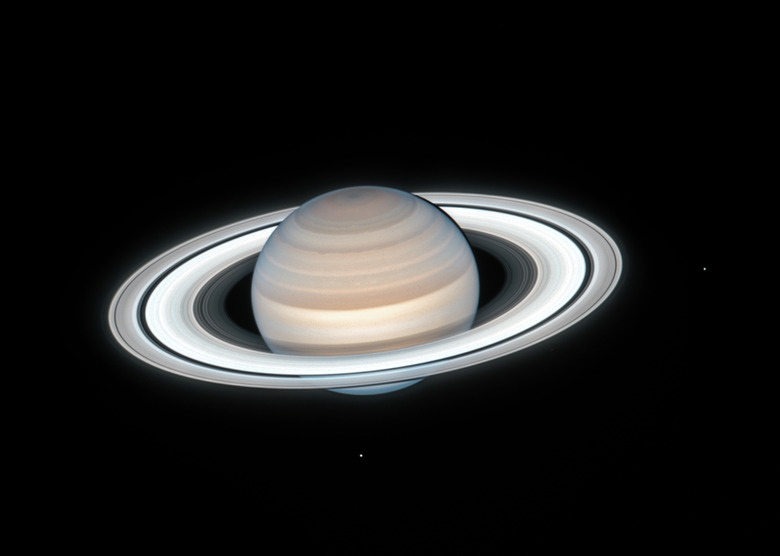Saturn Changed Colors, And Hubble Was Watching
Aside from Earth, Saturn is probably the most instantly recognizable of the planets in our solar system. It's the only planet with bold, easily visible rings — other planets, such as Uranus, have rings as well, but they're not nearly as opaque — and you'd never mistake it for another world in our little stellar neighborhood. However, that doesn't mean it never changes, and NASA's Hubble Space Telescope recently spotted some very interesting color shifts happening on the planet.
In a new post on NASA's website, the space agency highlights a paper published in Planetary Science Journal where scientists reveal the subtle color changes happening on Saturn. The planet's rings don't change much from season to season, but the colors of the planet itself definitely do. A single year on Saturn is equivalent to 29 Earth years, so we see seasonal changes happen very slowly, but it's clear that something is happening beneath the clouds.
In fact, in 2018, 2019, and 2020, the planet's bands changed in remarkable ways. The scientists provided a nice animated image to help make the color changes more obvious. Check it out for yourself:

It might not be immediately noticeable, but focus on the mid-to-top of the planet orb and look at how the rings change. New rings form, some areas that were brighter become darker, and the darker region at the north pole of the planet spreads down significantly. These are pretty big changes, especially over the course of just three years, and it points to some very interesting things happening within the planet's atmosphere and possibly beneath it.
"These small year-to-year changes in Saturn's color bands are fascinating. As Saturn moves towards fall in its northern hemisphere, we see the polar and equatorial regions changing, but we are also seeing that the atmosphere varies on much shorter timescales," Amy Simon, lead author of the research, said in a statement. "What we found was a slight change from year-to-year in color, possibly cloud height, and winds – not surprising that the changes aren't huge, as we're only looking at a small fraction of a Saturn year. We expect big changes on a seasonal timescale, so this is showing the progression towards the next season."
What's perhaps most interesting about seeing changes like these in Saturn's visible upper layer is what it might mean for the changes happening deeper within the planet. Nobody really knows what lies within gas giant planets like Saturn and Jupiter, and it's possible that some or all of these planets have solid inner cores surrounded by liquids and gasses. We don't yet have the technology to peer deep through the thick layers of clouds, but one day we might, and those observations could offer us the clues that reveal where the colors come from and what sparks the changes.
